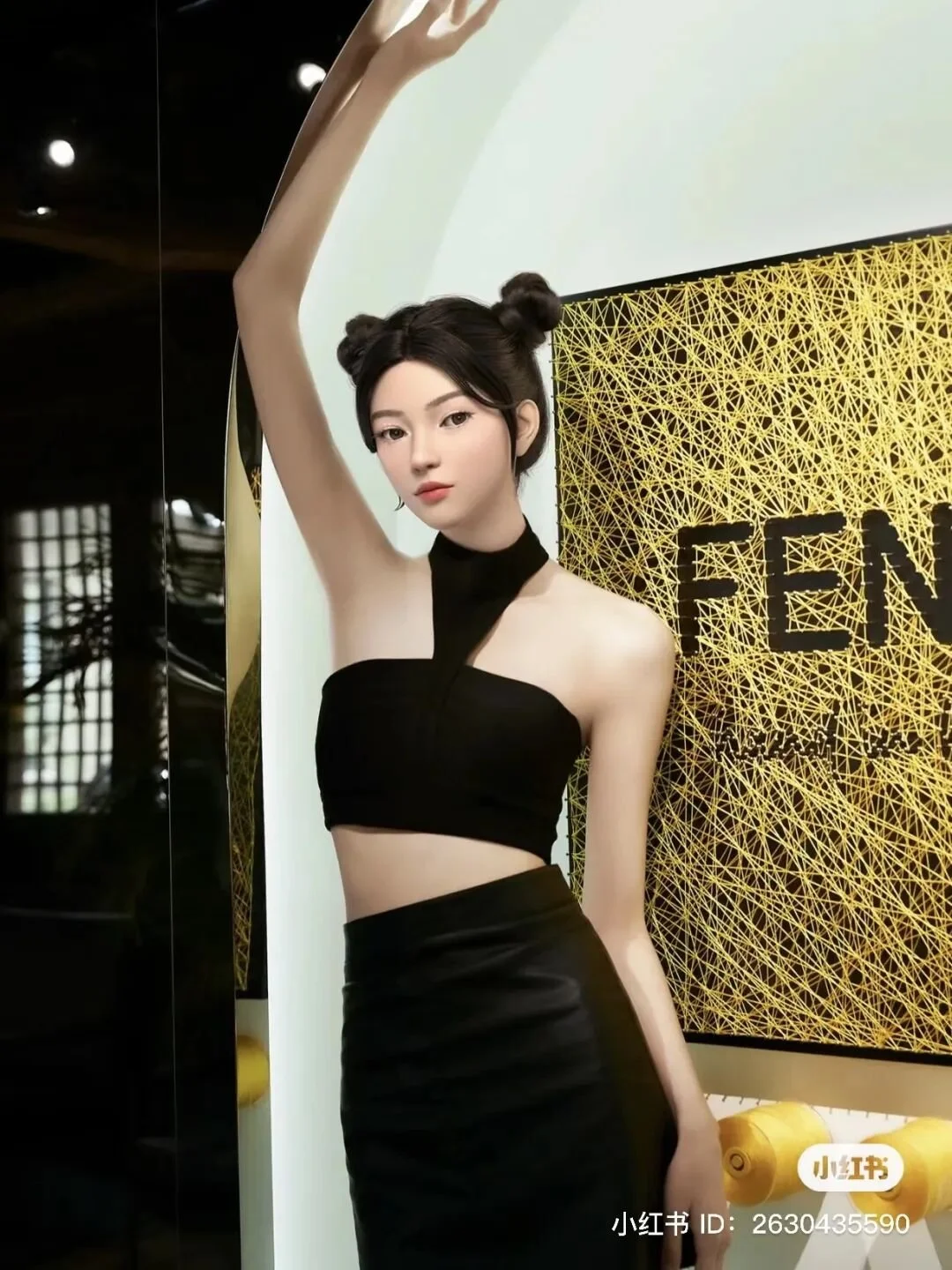Inside China’s Virtual Influencer Boom
Welcome to a thrilling new era, where personalities aren't just people but creations of pixels and AI. China’s digital landscape is pioneering virtual influencers who have gone beyond the screen to dazzle on runways, livestreams, and customer service counters alike.
From marketing to education, these digital personalities are cooking up fresh engagement strategies. As brands pour in creativity and tech, we’re savoring a bold new flavor of marketing. Ready to dive into China’s virtual influencer revolution?
In this post:
How big is the virtual influencer market in China?
Who are the hottest virtual influencers in China right now?
What are some of the benefits of using virtual influencers for brands?
What are some of the challenges of using virtual influencers for brands?
How are virtual influencers being used in the luxury goods market?
Luo Tianyi
China started developing its own famous virtual influencers already more than 10 years ago. While not the first in the traditional marketing sense, Luo Tianyi, a virtual singer created in 2012 using Vocaloid tech, was a trailblazer. Her immense popularity paved the way for a wave of virtual characters to come.
In 2018, Poka Poka, one of China’s first homegrown virtual influencers, debuted as a stylish “intern” with a distinct style. Shortly after, e-commerce giant Tmall introduced Aimee, an AI influencer dedicated to promoting luxury fashion brands.
China’s booming virtual human scene has fostered a unique ecosystem where virtual human agencies play a critical role. These agencies act as the bridge between the digital world and reality for virtual influencers and models.
At the core of their function lies creation. Virtual human agency employs skilled artists, programmers, and engineers to design and develop virtual humans. This encompasses crafting the virtual persona’s entire existence, backstories, from their visualappearance and personality to their voice and mannerisms.
Once the persona is created, the virtual influencer agency takes on the role of manager. They handle the day-to-day operations, scheduling appearances, negotiating lucrative brand deals, and crafting engaging content for the virtual persona’s social media platforms and marketing campaigns.
As the virtual human industry in China continues its rapid growth, virtual human agencies are set to play an increasingly pivotal role. Their expertise in creation, management, and representation will be essential in shaping the future of this innovative field. Later in this article, we’ll share the projected number of companies related to virtual influencers—and it's a significant one.
Among the most famous virtual influencers in China are Liu Yexi, Luo Tianyi, Ayayi, Tian Yu, Xi Jia Jia, and REDDI. These digital personalities have successfully collaborated with renowned brands, captivating audiences with their unique personas and engaging content.
Virtual influencers are proving their broad appeal and marketing muscle through successful partnerships with luxury brands. Take, Ayayi, a hyper-realistic avatar creation, who's a shining example of top level campaigns. Through strategic partnerships and brand collaborations, she has become a key player in China’s luxury marketing scene, representing prestigious brands like Bvlgari, Tissot, Shiseido, and the list is expanding.
Luxury collaborations are just one piece of the puzzle. Also, the rise of virtual performers, often referred as vocaloids, has exploded in popularity, blurring the lines between reality and digital entertainment.
While virtual influencers dominate headlines with their brand partnerships, virtual models are quietly making waves in the fashion and e-commerce industries. These AI-powered creations grace product campaigns and online runways, offering brands a cost-effective and versatile solution. Unlike human models, virtual models can be effortlessly styled in any outfit, pose in impossible positions, and cater to diverse aesthetics, all without the limitations of physical constraints.
But not all campaigns go as planned - human or virtual idol. Last year, a digitally created version of singer and actor Calvin Chen took the internet by storm with a 15-hour livestream. But there was a twist: it wasn’t actually Calvin. This AI clone, chomping down on chicken feet for his 9 million followers, was a computer-generated simulation.
While the concept grabbed attention, the execution fell flat. Chen’s audience wasn’t buying it. The perceived lack of effort and creativity sparked backlash, leading to a loss of 7,000 followers in just three days. Netizens accused Chen of laziness, with comments like “He doesn’t even have to go to work anymore,” and “Are you really that lazy you don’t even want to put in any effort to earn money anymore?”
At the same time, big players like Baidu, Tencent and Alibaba are innovating AI cloning technology, and even Xiaoice, Microsoft’s spin-off chatbot for China, has announced a program seemingly aimed at influencer and celebrity AI cloning.
Speaking about China’s livestreaming scene which is exploding, virtual anchors are at the forefront of this revolution.
With 24/7 availability, reduced operational costs, and continuous engagement, virtual anchors offer brands a compelling choice. In China, livestreaming is valued at over 5.4 trillion RMB with a user base exceeding 727 million—currently the country’s most popular video format, especially for social commerce. For context, this is close to being an equivalent of national GDP of of countries like Switzerland or Saudi Arabia!
This massive audience has fueled explosive growth, with the number of streamers reaching a staggering 12.34 million in 2020 alone. Brands are rapidly recognizing the potential of these tireless virtual hosts.
As China advances in the field of emerging technologies, virtual anchors are set to become increasingly sophisticated and immersive. The integration of 5G and the progression towards 6G networks will facilitate real-time rendering, seamless interactions, and an enhanced sense of presence, further blurring the lines between the virtual and the physical.
Also, China’s gaming landscape is witnessing a metahuman boom. AI-powered personas are specifically designed to engage with gamers and elevate the overall entertainment experience.
They actively interact with fans through live streams, participate in in-game events, and even release AI-driven digital assets such as original music. This deepens the connection with gamers, fostering a sense of community and loyalty. Take Ling, for example, who is a popular virtual idol associated with the mobile game “Honor of Kings.”
In 2024, even museums hire virtual employees. The National Museum of China and Tencent introduced Ai Wenwen, an AI-powered guide, to acquaint visitors with over 1.4 million artifacts, enhancing the museum experience and safeguarding cultural stories.
Ai Wen Wen - digital human by National Museum of China
Application of virtual humans are becoming more and more wide-spread and is not reserved for the top-tier experimental and luxury campaigns.
Unlike human influencers, virtual personalities can be entirely customized to match a brand’s style and values. From their appearance and personality to how they communicate with audiences, virtual influencers give brands complete control.
This flexibility means brands can ensure a consistent image and adapt these digital characters to meet any campaign goal, creating a uniquely tailored experience that resonates with their audience.
Plus, since virtual influencers are scandal-proof, brands can avoid the risks of unpredictable behavior that sometimes come with real-life celebrities.
Leading tech giants in China, such as Baidu and Tencent, are investing heavily in developing platforms and infrastructure to facilitate the creation and deployment of virtual humans. These efforts aim to streamline the production process, reduce costs, and enable a wider range of applications across various industries.
Chinese virtual influencer industry is experiencing explosive growth. The market size has skyrocketed by a staggering 285% in just between 2019-2022. The sector was estimated to be worth 36 billion yuan in 2023 and was set to reach the 300 billion yuan mark by 2030.
In 2022 alone, the number of virtual influencers on platforms like Weibo (31%), Bilibili (28%), and Douyin (22%) skyrocketed. These digital personalities are capturing hearts and driving sales on major e-commerce platforms like Taobao and Tmall, redefining how brands connect with audiences.
Fueling this growth is the enthusiastic embrace of virtual idols by Chinese netizens, with over 60% actively following these digital personalities. Looking ahead, the future seems even brighter.
Acknowledging potential challenges, Chinese regulatory bodies are taking a proactive stance. Potential measures include mandating virtual influencer partnership disclosures and establishing clear ethical guidelines. Additionally, safeguards to protect vulnerable populations, like young audiences, are a priority.
By addressing these issues and establishing clear regulations, virtual influencers can continue to be a powerful marketing tool while ensuring consumer safety and responsible development.
The integration of digital idols in marketing strategies will most likely become a standard practice in the near future. It will have a significant impact on virtual influencer marketing and perhaps even whole fashion industry.
Brands will leverage the consistency, visual appeal, control, and cost-effectiveness of VIs, executing innovative campaigns that enhance engagement while reducing the risks tied to human influencers.
However, as the technology matures, the ethical and cultural implications of using virtual ambassadors will require addressing to maintain transparency and trust with consumers.
Now, virtual influencers in China have transcended mere novelty status. They’re a disruptive force across industries, from revolutionizing marketing and music to propelling e-commerce forward. Offering brands a cost-effective and scandal-proof solution, personalities are weaving emotional intelligence into online shopping experiences. However, their creation and upkeep aren’t without challenges.
Despite hurdles such as substantial initial investment, the future of virtual influencers remains bright. Advancements in AI, Web3 and development of digital worlds, promise to enhance their sophistication and emotional intelligence. This will pave the way for more nuanced interactions and wider acceptance.
However, ethical and cultural debates will undoubtedly evolve alongside this technology. Transparency and cultural sensitivity must remain at the forefront as virtual influencers navigate this complex landscape.



















